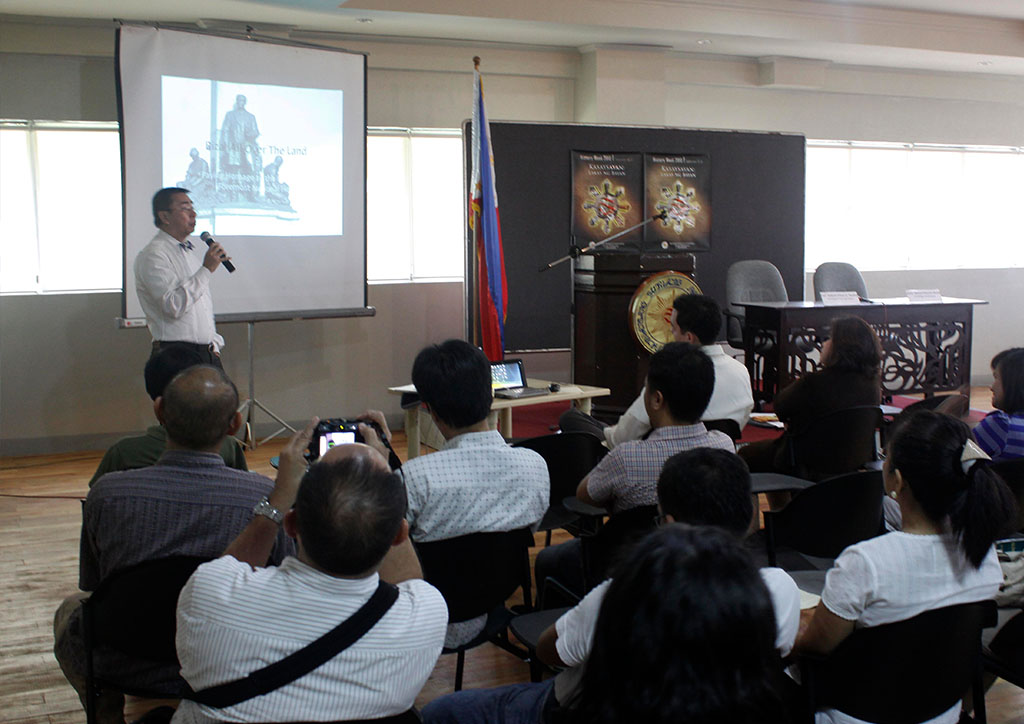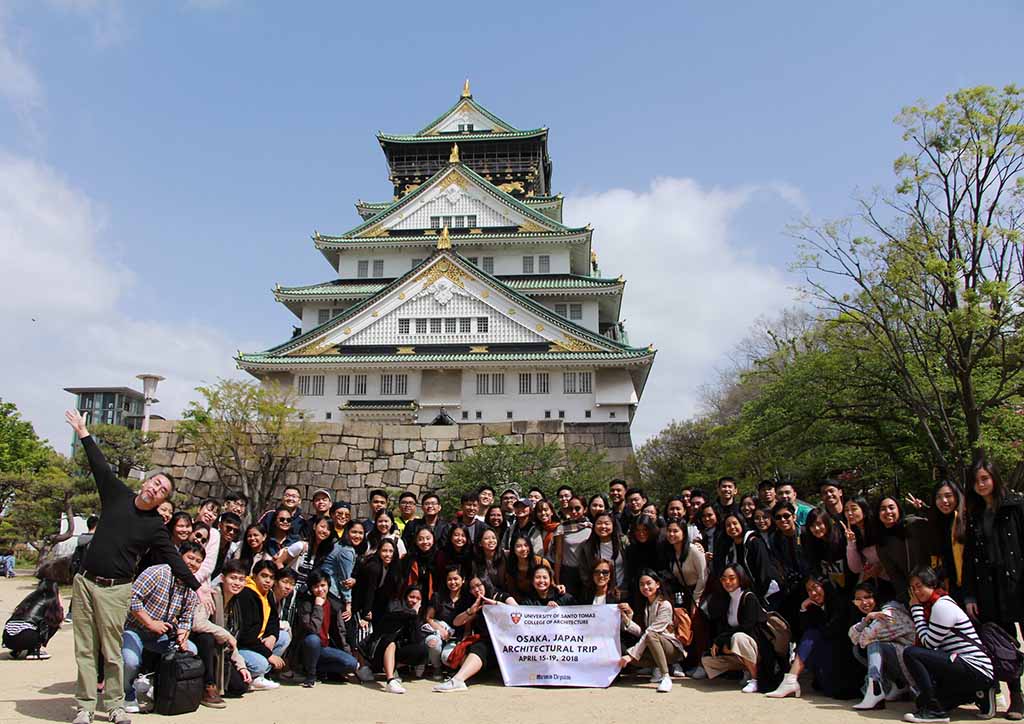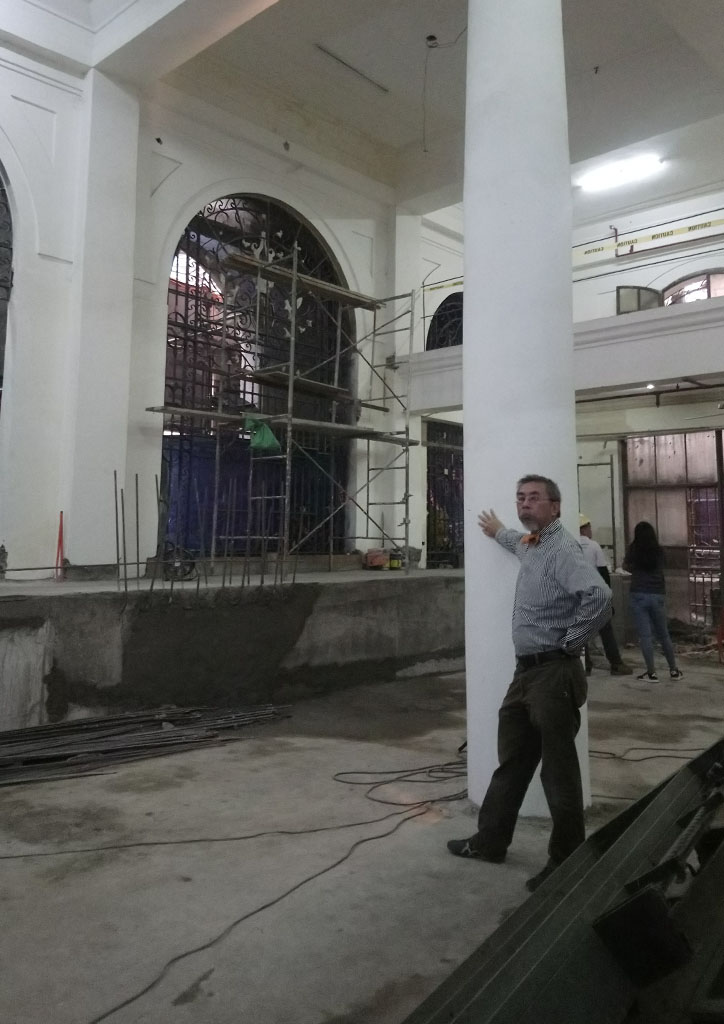
Experience is the best architecture teacher — Manolo Noche
When Manolo Noche wrote for BluPrint’s Architecture Education issue (Special Issue 2 2015), he enumerated the types of professors that one would meet in architecture school. He spoke of the common mean and scary professors, educators who literally live by the book, and teachers who end up teaching their students more than just the promises of the course. Five years later, BluPrint asked Manolo Noche a few additional questions on architecture education, including how architecture and design can be effectively taught during and after this pandemic. What can be inferred from a few email exchanges is that in Noche’s personal list of professorial typologies, the best teacher is one that cannot be seen strolling through the halls of the academe, one that a student does not just meet within the walls of a classroom. The best teacher, as everybody says, is experience.
READ MORE: Professorial Typologies: The different professors you will meet in Architecture school
On gaining and giving instruction
“Unlike others who had a clear idea as to what profession they would follow, I on the other hand didn’t, as none in the family were architects or in the building profession,” Noche recalls, saying that both of his parents were lawyers and his two elder siblings studied economics as a degree. “Likewise, as I was studying in the Ateneo, the choice of college course was assumed to be those offered by my alma mater, and Ateneo did not offer architecture.” It was in consideration of his National Career Assessment Examinations (NCAE) results that he got into the program. “The arts was where I was strong at so the choice fell on a professional course, which was architecture!” He added that two of his best friends in high school opted to take architecture as well, so it was decided.
YOU MIGHT LIKE: Architecture education should adapt to the realities of the profession
Contrary to how a few factors influenced his choice of education, Noche’s education, in general, did not influence him much in terms of the profession. “I felt underwhelmed and uninspired by the mentors and their instruction. During my time, there were more professors who were trained in the old school of hard knocks, whose styles were more reserved and distant compared to some of today’s younger academics who, though less exposed professionally are more idealistic and even theatrical in their teaching styles,” he notes. The architect explains that “with today’s proliferation of information courtesy of the world wide web, younger professors and students have easier access to information that was absent in days gone by,” making architecture appreciation easier. Noche says that it only depends nowadays on students knowing what to watch on the web.

“The problem I guess is that as architects are not trained teachers, there is a lack of real inspiration and guidance coming from them. It was, therefore, left upon me to find inspiration in the subjects taught and utilize one’s own personal knowledge, through experiences, travels, and the like to appreciate further the beauty of architecture,” Noche shares. “As a well-traveled individual, even in my youth, the history of architecture fascinated me. Unfortunately, the professors assigned to teach the then three semesters of history were following more the tenets of an archaic book rather than real studied knowledge or even personal experience,” he states, remembering an instance where he even had to correct one of his professors about a historic building being discussed that he visited in one of his travels. “Planning was also a subject of interest as it sparked my curiosity regarding the city, Metro Manila I was living in. And again, because of my well-traveled nature, comparing it with others, made me wonder as to why I always lamented returning to this city after traveling abroad. But then again, the instruction I received only initiated a spark that would further be enlightened by my own personal interjection on the subject matter.”

As a professor, Noche strives to employ a more narrative form of teaching. “When I entered the teaching profession 31 years ago, I at first did not dream of getting old doing such. From day one of my teaching assignment, I made sure that I did not follow the style and techniques of my predecessors or former mentors for the reasons I previously mentioned,” he shares. The opportunity to take his postgraduate studies in the Bartlett in London allowed him to see various methods of instruction. He describes that mentors there provided a more personal approach in assisting and training students, far from the “I’m the professor, you’re the student” notion that is prevalent in the Philippine education setting. Apart from Noche’s efforts in finding improved teaching styles, he also uses a Socratic approach during class discussions, a method that encourages dialogue between the teacher and the students while also examining the beliefs and values of the students. These are his ways of “guiding students to discover their best potential by inspiring them of what a beautiful future the world could be because of architecture,” and encouraging students to continue these ideals.
Architecture education in the midst of a pandemic
The current reality for architecture students is basically having to submit plates, take quizzes, and self-study just to get through each semester. As the onslaught of the novel coronavirus continues, educational institutions are forced to recalibrate their systems to meet the demands of online classes. The question, therefore, is how architecture, which is physical and visual in nature, be taught effectively using virtual means? Noche underlines that while distance learning is suited for several subjects, there are certain courses that need monitoring and detailed instructions which cannot be supplied by online classes. “Especially challenging are first-year instruction as these students are literally devoid of any architectural knowledge. And with our technological tools and systems the way they are, this makes it further challenging.” Noche also highlights the fact that teachers are not the best paid and most of them cannot afford high tech devices. “Regardless of what universities say and claim, there is hardly any financial support for faculty who has to adapt to this new reality.”
READ MORE: Adapting architecture education during COVID-19
To address issues on lack of technological equipment and tools, Noche suggests that universities should consider lending out hundreds of idle desktops and laptops to those in need. He also mentions the option to subsidize electricity, internet connection, and personal spaces used by faculty members for online teaching. In terms of ensuring the quality of education that students receive, the professor says that the best way, once everyone is able to adjust, would be for students and faculty to utilize the knowledge provided for by Youtube channels. “Though, one would comment, why enroll if all the lessons learned will be coming from YouTube? Well, the reality is that students still need to enroll regardless of where the instruction came from. I guess the answer here is as long as these sources become supplemental to a discussion, and insights gained are actually discussed and applied, then students get the best of both worlds, as teachers use highly produced material and conduct meaningful discourse after these,” he elaborates, adding go-pro videos for construction and utility subjects. Noche says that from here, students are given broader examples that are not found in the local setting, determining their applicability and practicality. He proposes consultation sessions for design subjects alone, given that creative works usually require extensive examinations. In the long term, he says that colleges and universities can explore the possibility of having face-to-face classes for first-year students alone, as they could easily be spread out in available classrooms. Noche clarifies that these are suggestions and further studies should be undertaken to determine viability.

When asked about his suggestions regarding changes in the architecture and design curriculum, Noche answered, “nothing, as this pandemic will not change the fundamental nature of human interaction.” He says that as pandemics come and go, people will eventually revert back to their tried and tested behaviors. “This is seen in historical precedents where society bounces back, even with more wanton nihilism and outright disregard for what transpired. An example of this is the aftermath of the 1918 Influenza Pandemic, which was followed immediately by the wild Roaring ’20s. Human behavior will revert back to what it was before, slowly though, but surely.” What might change, according to him, is the way offices behave. “With work-from-home becoming a viable option, some companies might continue this paradigm as it saves them on office space. This will change how we design office buildings as well as commercial spaces. The mall paradigm might change and revert back to High Street Shopping as open street shopping becomes less regulated compared to the mall.” As a result, Noche states that concepts such as social distancing and spatial protection will be added to the discussions, but these will not entirely change the architecture curriculum. He reiterates that this is short-lived and may easily change, citing how the government immediately backtracked on motorcycle protection shields.
YOU MIGHT LIKE: Balancing creativity and technicality: John Ryan Santos on the intricacies of hospital architecture
The problem, however, “is that under-utilized spaces brought about by the need to provide social distancing is not economically viable.” Noche explains that no business owner will spend on vast open spaces without guarantees for the return of investment. “Implementing this paradigm will result in businesses closing which results in fewer buildings being built.” He says that the best way to handle this situation is “by making students aware of both realities, that at the end, the need to provide proper zoning should not sacrifice the economic viability of space.” He underscores the use of technology such as air purifiers, proper air circulation, the benefits of passive cooling, concerns of proper sanitation, and respect for the environment. These strategies and configurations adhere to the current quarantine and health protocols, also deepening the conversation on creating a better and healthier built environment.

Experience is often taken as an actual event. It is usually regarded as a remarkable or memorable moment. In the world of architecture and design, experience is beyond an occasion. The entire point of experiencing architecture and design is understanding it, not just through visual, but especially through context. Noche’s advice to young designers is to travel, travel, travel. “While traveling, open one’s eyes and be curious as to what others have, or are doing.” As traveling is not possible given the current situation, Noche encourages students and aspirants to watch relevant videos online regarding cities, read architectural travel guides, and stay updated on architectural innovations. It is in recognizing and understanding these wonders where one can broaden their horizons. “Only through seeing the beauty of architecture does one dare to dream of a better architectural world.”
READ MORE: How does architectural education equal distance, speed, and time?


